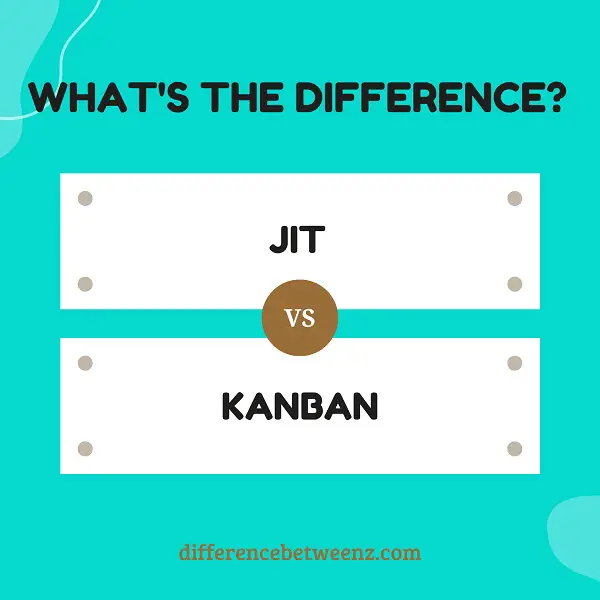In today’s business world, there are a number of different approaches to production and inventory management. Two of the most popular are Just-In-Time (JIT) and Kanban. While similar in some ways, these two systems have important differences that can impact your business. This article will explore those differences and help you decide which system is best for your company.
What is JIT?
JIT is a production strategy that involves manufacturing products only as they are needed. JIT production is based on a “pull” system, in which each workstation signals the need for more components as it uses up the existing inventory. This system is in contrast to a “push” system, in which production is based on forecasts of customer demand. JIT production can help to reduce lead times, inventory levels, and manufacturing costs.
JIT also promotes continuous improvement by motivating workers to find ways to eliminate waste and improve efficiency. JIT production is not without its challenges, however. JIT requires careful planning and coordination, and it can be disrupted by unexpected changes in demand or supply. Nevertheless, JIT remains an important tool for many manufacturers.
What is Kanban?
Kanban is a lean manufacturing system used to control production. Kanban was developed by Toyota in the 1950s and is now used by companies all over the world. Kanban systems are designed to improve efficiency and quality by reducing waste and improving communication. Kanban systems typically use cards or magnets to signal when a part is needed, and Kanban boards to track the progress of work. Kanban can be used in manufacturing, software development, and other types of work. When implemented successfully, Kanban can help reduce waste, improve quality, and increase efficiency.
Difference between JIT and Kanban
JIT and Kanban are two popular methods for managing manufacturing processes. Both JIT and Kanban aim to improve efficiency and quality by reducing waste and minimizing disruptions. However, there are some key differences between the two approaches. JIT is a Pull system, which means that production is based on customer demand.
This can lead to lower inventories and faster turnaround times. In contrast, Kanban is a Push system, which means that production is based on a preset schedule. This can provide greater stability and predictability but may result in higher inventories. Ultimately, both JIT and Kanban have their own strengths and weaknesses, and the best approach for a given company will depend on its specific needs.
Conclusion
While the two systems share some similarities, there are key differences between JIT and Kanban. Understanding these differences can help you choose the system that will work best for your business.


